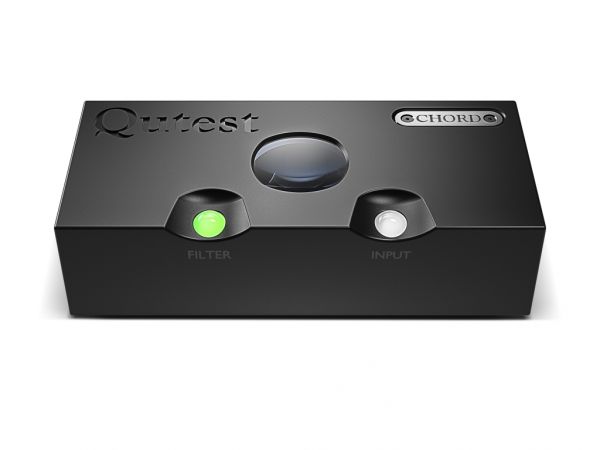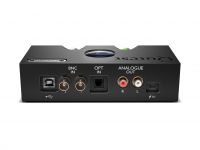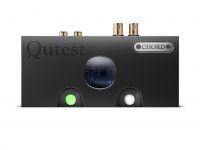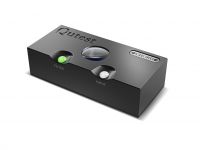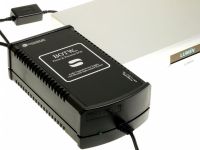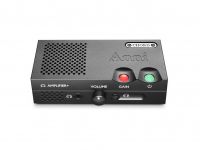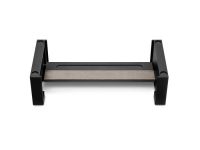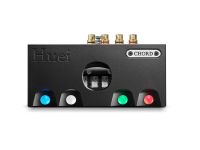CHORD ELECTRONICS
QUTEST Black
DAC Convertisseur numérique vers analogique avec raccordement USB, noir
1 en stock
Prix catalogue
CHF 1'189.00
Description
Qutest est une Quelle Hi-Fi ? Primé DAC avec une performance qui dément ses dimensions compactes. Avec DAC architecture basée sur notre technologie FPGA de pointe, Qutest offre des gains de qualité sonore inégalés.La Qutest DAC est conçu pour améliorer instantanément la qualité sonore du système. Il s'agit de la dernière évolution de notre modèle « autonome » le plus abordable. DAC, autrement dit, celui qui ne contient pas d'amplificateur de casque intégré, comme le Mojo 2 et Hugo 2.
La Qutest est Qu'est-ce que la Hi-Fi ?Les meilleurs DAC» 2023 1,000 XNUMX £+ et un Quelle Hi-Fi ? 'Meilleur DAC' lauréat chaque année de sa création (2018-2022). Il s'agit d'un leader éprouvé et basé sur notre technologie FPGA propriétaire primée, ce qui lui confère des performances techniques et sonores inégalées.
Parfaitement équipé pour apporter les avantages de notre technologie numérique à une large gamme d'appareils connectés, il dispose d'une entrée numérique USB-B, optique et coaxiale isolée galvaniquement, offrant une mise à niveau instantanée des performances, ainsi que la possibilité de moderniser les composants sources numériques vieillissants.
La Qutest le châssis est également tout nouveau. Il a une masse nettement supérieure à celle de son prédécesseur et a été usiné avec précision à partir de billettes d'aluminium solides de qualité aéronautique. le Qutest Le circuit imprimé se niche dans une cavité peu profonde du châssis en aluminium massif, ce qui confère au circuit imprimé une meilleure protection dans le boîtier et une isolation supplémentaire contre les vibrations externes par rapport aux conceptions précédentes.
Qutest . Hugo Les filtres de mise en forme de fréquence et les commandes de sélection d'entrée exclusifs de 2 sélectionnables par l'utilisateur, disponibles via deux sphères montées sur le fascia, introduisent une flexibilité utile. Il dispose également de sorties analogiques RCA pour la connexion à des amplificateurs, préamplis et amplis casque intégrés, ainsi que des signaux numériques à double données haute résolution. entrées pour se connecter au futur Chord Electronics en vente au détail.
Une autre nouveauté est une tension de sortie sélectionnable par l'utilisateur disponible en sorties 1, 2 et 3 V RMS pour une connectivité flexible avec une large gamme d'appareils partenaires.
Le Quelle Hi-Fi ? 'Meilleur DAC' 2023/24 Qutest est le petit convertisseur DA audiophile par excellence.
FONCTIONNALITES
- Matériaux : Boîtier en aluminium usiné avec précision polyboutons de carbonate et portail de visualisation en verre. Disponible uniquement en Jett Black.
- Alimentation de l'appareil: Micro USB 5 v 2 ampères
- Filtre de longueur de prise: 49,152 - Conception de réseau d'impulsions à 10 éléments
-
Connectivité (entrée):
- USB Type B (blanc): 44.1 kHz à 768 kHz - 16 bits à 32 bits
- 2x BNC Coax (Rouge): 44.1 kHz - 384 kHz - 16 bits à 32 bits
- 1x double entrée de mode de données (en utilisant les deux entrées coaxiales BNC ensemble): 44.1 kHz à 768 kHz - 16 bits à 32 bits
- Optique (vert): 44.1 kHz à 96 kHz - 16 bits à 24 bits
- Connectivité (sortie): 1x paire stéréo de RCA (gauche et droite)
- Prise en charge PCM: 44.1 kHz, 48 kHz, 88.2 kHz, 96 kHz, 176.4 kHz, 192 kHz, 352.8 kHz, 384 kHz, 717.6 kHz et 768 kHz. 16 à 32 bits
- Prise en charge DSD: Lecture native prise en charge. DSD64 (unique) à DSD512 (Octa-DSD)
- Sortie variable: Fixe, mais sélectionnable entre 3v (bleu), 2v (vert) et 1v (rouge) via une double pression sur `` Filtre '' + `` Entrée '' au démarrage
- Assistance aux pilotes: Sans pilote avec Mac OS X et Linux, pilote requis pour Windows OS
- Concepteur numérique: Rob Watts
- Concepteur mécanique: John Franks
- Pays de fabrication: de l'Angleterre
Spécifications
- Chipset: Chord Electronics FPGA codé personnalisé Xilinx Artix 7 (XC7A15T)
- Longueur de prise: 49,152
- Réseau d'impulsions: Conception de réseau d'impulsions à 10 éléments
- Réponse en fréquence: 20 Hz - 20 kHz +/- 0.2 dB
- Etage de sortie: Les harnais complets de classe A
- THD: <0.0001% 1 kHz 3v RMS 300Ω
- THD et bruit à 3v RMS: 117 dB à 1 kHz 300 ohms pondéré `` A '' (reference 2.5v)
- Bruit 2.6 uV pondéré «A»: Pas de modulation de bruit de fond mesurable
- Séparation des canaux: 138 dB à 1 kHz 300Ω
- Poids: 770 g
- Dimensions : 4.5 cm (hauteur) 16 cm (largeur) 8.8 cm (profondeur)
- Poids emballé: 1500 g
Numéro d'article : CHQUTESTB

